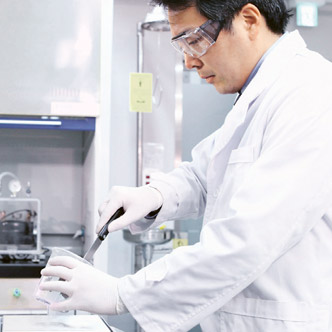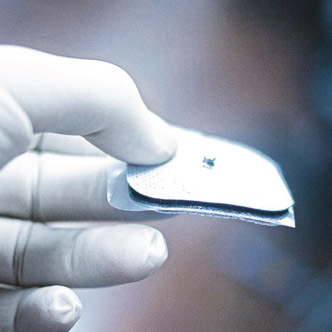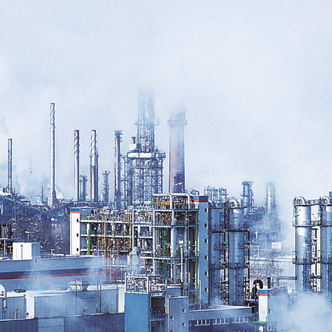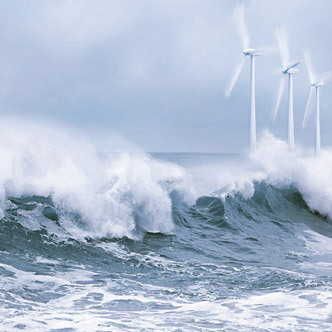Economic and Legal Factors
WACKER sells its products and services to virtually every industry. Although we are not immune to economic fluctuations at our individual business divisions, their impact and onset may vary. We are able to mitigate the impact of these fluctuations, thanks to our product portfolio and broad customer base.
Orders
The terms for orders placed with WACKER vary from division to division. Most orders received by WACKER SILICONES are short-term, with a small number of long-term ones. Goods are usually shipped within three months of receipt of order. At WACKER POLYMERS, business is based on contracts and master agreements with terms of up to one year. Around 30 percent of incoming orders are short term. WACKER POLYSILICON concludes short- and medium-term contracts, some of which include flexible volume-specific escalator clauses. Siltronic usually negotiates orders with the customer from one quarter to the next. As a rule, we aim for fixed contracts with negotiated prices and quantities. Due to varying order-placement procedures at the Group and its divisions, order-level reporting is not very meaningful and hence does not serve as an indicator in our monthly reports.
Operational Metrics as Leading Indicators of Future Developments
By referring to specific leading indicators based on operational metrics, we try to factor potential developments into our business plans and to allocate capacities accordingly. Since our operations are based on diverse businesses and markets, we use a number of leading indicators to gain insights into potential developments at each of our business divisions. As many of WACKER’s products are destined for the construction industry, we deploy various analytical tools in order to assess future growth in this segment.
Leading Operational Indicators
|
||
Business Divisions |
Leading Operational Indicator |
Indicator of |
|
|
|
WACKER SILICONES WACKER POLYMERS WACKER BIOSOLUTIONS |
Raw-material and energy price trends |
Our cost trends |
WACKER SILICONES |
Orders received per month |
Our capacity utilization |
WACKER POLYSILICON |
Short-, medium- and long-term contracts |
Our capacity utilization, further market trends |
Market research, talks with customers |
Increase in solar capacity by country, our capacity utilization |
|
SILTRONIC |
Data on chipmakers’ capacity utilization |
Our capacity utilization |
All business divisions |
Talks with customers |
Our sales trend, our product quality |
Market research |
Market trends, product innovations |
|
|
|
|
Economic Factors Impacting Our Business
The main economic factors influencing WACKER’s business remained unchanged in many areas. Accounting for around 38.0 percent of production costs, energy and raw-material costs had the largest impact in 2016.
Energy and Raw-Material Costs
As a chemical company, we belong to an energy-intensive industry and require diverse raw materials to manufacture our products. Consequently, higher energy and raw-material costs impact our cost structure. WACKER is taking steps to reduce its dependence on this factor. By generating our own power at Burghausen and Nünchritz, we are reducing our energy-procurement needs and consequently the cost risk. Amendments to the regulatory framework, such as grid charges, energy or electricity taxes or levies relating to the German Renewable Energy Act (EEG), can negatively affect WACKER’s energy costs both directly and indirectly – e. g. through higher grid charges or fees. However, cost reductions for energy-intensive companies in connection with the EEG levy, for example, can have a positive impact on energy costs. We continually focus on improving our energy efficiency. The goal is to reduce specific energy consumption by half between 2007 and 2022. When procuring raw materials, we increase price flexibility by sometimes concluding contracts with varying terms, with more scope regarding volumes or with regular price adjustments that reflect wholesale market prices.
Exchange-Rate Fluctuations
As a rule, WACKER hedges against exchange-rate fluctuations. We hedge at least half of our dollar and yen exposures for each subsequent year with a mix of derivative currency hedging transactions and documented stop / loss orders. In determining sensitivity, we simulate a 10-percent devaluation of the US dollar against the euro. Without hedging, an increase in the euro against the US dollar would have negatively impacted EBITDA by around €60 million.
State-Regulated Incentive and Feed-In Tariff Programs for Renewable Energy Sources
As one of the world’s leading suppliers of hyperpure polycrystalline silicon, we are affected by regulatory changes to incentive and feed-in tariff programs for renewable energy sources. Substantially lower prices for solar modules and cells have greatly increased the competitive advantage of solar energy over fossil fuels and other methods of generating energy. The cost of manufacturing photovoltaic products is expected to continue declining, which will further reduce dependence on state-regulated incentive and feed-in tariff programs over the next few years. Our assumption is that, in a few years, solar energy will get by even without special incentives, particularly in combination with cost-efficient storage possibilities. At the same time, WACKER will maintain its focus on improving productivity in order to preserve its competitive position. Our strong cost position, high product quality, international orientation, wide customer base and multiyear supply contracts give us a competitive edge over other manufacturers.
Legal Factors Impacting Our Business
China imposed anti-dumping and anti-subsidy tariffs on polysilicon manufacturers in the USA. As things stand now, polysilicon produced at our site in Charleston, Tennessee (USA) is also affected by these tariffs. Negotiations are being conducted between China and the USA with the aim of resolving the trade dispute regarding solar products, which would also benefit WACKER. However, WACKER has the option of taking up direct contact with China to discuss an exemption from tariffs. In May 2014, WACKER and the Chinese Ministry of Commerce (MOFCOM) signed a minimum price agreement for exports of polysilicon produced in Europe, which was valid until April 2016. MOFCOM, in turn, refrained from imposing anti-dumping and anti-subsidy tariffs on this material. In May 2016, MOFCOM opened a review. MOFCOM will make a decision by April 2017, at the latest, on whether to retain or rescind the measures. The stipulations of the minimum price agreement will remain unchanged until then. The measures imposed by the EU against China are also currently under review, with an EU Commission decision expected in March 2017. Until then, the agreement regulating the import of solar modules from Chinese solar companies applies unchanged.
Total of 192 Registration Dossiers Submitted as Part of REACH
By late 2016, WACKER had submitted 192 registration dossiers to the European Chemicals Agency (ECHA). For some of the phase-one and phase-two dossiers, submitted in 2010 and 2013, ECHA required additional information, which we provided in 2016. The ICCA (International Council of Chemical Associations) has developed the Global Product Strategy (GPS), which is a guideline on how to assess chemical properties and provide product safety information. In Europe, most GPS requirements are satisfied by REACH and by CLP (Classification, Labeling and Packaging of Substances and Mixtures). By the end of 2016, we had published 75 Safety Summaries on the ICCA chemicals website for the substances we have registered under REACH.









